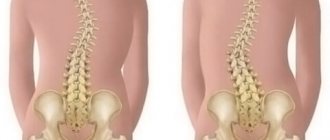Review
Foodborne botulism is a severe, potentially fatal, but relatively rare disease.
This is an intoxication usually caused by the consumption of highly potent neurotoxins, botulinum toxins, produced in contaminated foods. Botulism is not transmitted from person to person. The spores produced by Clostridium botulinum are resistant to high temperatures and are widely distributed in the environment. In the absence of oxygen, these spores germinate, develop and begin to release toxins. There are 7 different forms of botulinum toxin – types A – G. Four of them (types A, B, E and in rare cases F) cause human botulism. Types C, D and E cause disease in mammals, birds and fish.
Botulinum toxins enter the body through the consumption of unprocessed foods in which bacteria or spores survive and produce toxins. The main cause of human botulism is food intoxication, but it can be caused by intestinal infections in infants, wound infections, and by inhalation.
How to avoid infection
According to the recommendations of Rospotrebnadzor, to prevent botulism you should:
- use only industrially prepared canned food;
- Do not under any circumstances eat canned food with a bulging lid;
- wash vegetables, fruits and mushrooms well from soil particles;
- Do not use vegetable products with signs of spoilage for home canning;
- quickly remove the entrails from caught or purchased fish, wash it well, and then store it in the cold;
- do not preserve, but pickle mushrooms and vegetables;
- Before using as food, boil canned foods for about half an hour to destroy botulinum toxin.
You should know that products contaminated with Clostridium botulinum are indistinguishable from quality food in taste, color and smell. The best way to avoid poisoning is to heat treat any canned food for 15-20 minutes. This will help avoid not only botulism, but also other intestinal infections that cause poisoning and inflammation of the gastrointestinal tract.
Symptoms of foodborne botulism
Botulinum toxins are neurotoxic and therefore affect the nervous system. Foodborne botulism is characterized by descending flaccid paralysis, which can lead to respiratory failure.
Early symptoms include severe fatigue, weakness and dizziness, usually followed by blurred vision, dry mouth, and difficulty swallowing and speaking. Vomiting, diarrhea, constipation, and bloating may also occur. As the disease progresses, weakness may develop in the neck and arms, followed by damage to the respiratory muscles and muscles of the lower body. The temperature does not rise and loss of consciousness does not occur.
The cause of these symptoms is not the bacterium itself, but the toxin it produces. Symptoms usually appear 12–36 hours (minimum 4 hours and maximum 8 days) after exposure. Incidence rates for botulism are low, but mortality rates are high unless correct diagnosis is promptly made and treatment (early antitoxin and intensive mechanical ventilation) is not provided. The disease can be fatal in 5–10% of cases.
What happens in the human body
The incubation period for botulism is variable and can last from 2 hours to 5 days, but, as a rule, symptoms of poisoning appear within the first 2-6 hours after the bacteria and its products enter the body. Botulinum toxin begins to penetrate the blood already in the oral cavity. The main part of it is absorbed in the small intestine and then distributed throughout the body. The toxin very quickly affects nerve fibers, blocking the transmission of nerve impulses coming from the brain and spinal cord to muscle tissue. Because of this, the function of muscle fibers decreases or stops completely.
Paralysis affects the ocular and swallowing muscles, then the intercostal and diaphragm muscles. The peristaltic activity of the intestine decreases, the protective activity of leukocytes decreases, metabolic processes in red blood cells change, as a result of which the oxygen supply to tissues sharply deteriorates. A person experiences difficulty breathing, which will soon lead to death if immediate medical attention is not provided.
Exposure and transmission
Food botulism
C. botulinum is an anaerobic bacterium, meaning it can only grow in the absence of oxygen. Foodborne botulism occurs when the bacteria C. botulinum grows and produces toxins in food before it is consumed. C. botulinum produces spores that are widely distributed in the environment, including soil, river and sea water.
Bacterial growth and toxin production occur in foods with low oxygen content and under certain combinations of storage temperature and preservation parameters. This most often occurs in lightly preserved foods, as well as in foods that have not been properly processed, canned or bottled at home. In an acidic environment (pH less than 4.6), C. botulinum does not develop, and therefore the toxin is not produced in acidic foods (however, low pH does not destroy toxins previously produced). Low storage temperatures combined with certain salt and/or acidity levels are also used to prevent bacterial growth and toxin production.
Botulinum toxin is found in a wide range of foods, including low-acid canned vegetables such as green beans, spinach, mushrooms and beets; fish such as canned tuna, fermented, salted and smoked fish; and meat products such as ham and sausages. Food products vary from country to country and reflect local dietary habits and food preservation techniques. Sometimes botulinum toxins are found in industrially prepared products.
Although C. botulinum spores are resistant to high temperatures, the toxin produced by bacteria that develop from spores under anaerobic conditions is destroyed by boiling (for example, at an internal temperature of >85C for five minutes or more). Therefore, the most common cause of human botulism is ready-to-eat foods in packages with low oxygen content.
To determine the cause and prevent further cases of illness, samples of foods implicated in suspected cases must be immediately obtained, placed in appropriate sealed containers, and sent to laboratories.
Infant botulism
Infant botulism occurs mainly in children under 6 months of age. Unlike foodborne botulism, which is caused by consuming already produced toxins in foods (see point a above), infant botulism occurs when children ingest C. botulinum spores, which develop into bacteria that colonize the intestines and produce toxins. This does not happen in most adults and children over 6 months of age because natural intestinal defense mechanisms, which develop later, prevent spore germination and bacterial growth.
Clinical symptoms in infants include constipation, loss of appetite, weakness, altered crying, and pronounced loss of head support. There are several likely sources of infection with infant botulism, but a number of cases have been associated with honey contaminated with the spores. Therefore, parents and caregivers should not give honey to children under 1 year of age.
Wound botulism
Wound botulism rarely occurs when spores enter an open wound and are able to multiply under anaerobic conditions. Symptoms are similar to foodborne botulism but may take up to two weeks to appear. This form of the disease is associated with substance abuse, particularly heroin injection.
Botulism due to inhalation
Botulism rarely occurs as a result of inhalation. Such cases do not occur naturally, but are associated, for example, with accidental or deliberate events (such as bioterrorism) that result in the release of toxins in aerosols. The clinical picture of inhalation botulism is similar to that of foodborne botulism. The average lethal dose for humans is estimated to be 2 nanograms of botulinum toxin per kilogram of body weight, which is approximately 3 times higher than in cases of foodborne botulism.
Symptoms appear 1 to 3 days after inhaling toxins, or over a longer period of time for lower levels of intoxication. Symptoms develop in the same way as with foodborne botulism, and at the final stage muscle paralysis and respiratory failure occur.
If exposure to a toxin through aerosol inhalation is suspected, additional exposure to the patient and others must be prevented. The patient's clothing should be removed and stored in plastic bags until thoroughly washed in soap and water. The patient should take a shower and immediately undergo disinfection.
Other types of intoxication
Theoretically, botulism can be transmitted through water as a result of ingestion of a previously produced toxin. However, given the fact that water treatment (such as boiling or disinfection with a 0.1 percent hypochlorite solution) destroys the toxin, this risk is considered low.
Botulism of undetermined origin is usually recorded among adults in cases where the source of food or wound botulism is not identified. These cases are comparable to infant botulism and can occur when the normal intestinal flora is altered by surgery or antibiotic therapy.
Adverse reactions to the pure toxin have been reported among patients for medicinal and/or cosmetic purposes (see Botox section below for further information).
Story
The first mention of cases of botulism refers to a decree banning the consumption of blood sausage due to its danger to life, signed by the ruler of Byzantium, Leo VI (866–912). Nine centuries later, the “Killer Sausage” has again attracted public attention. In 1789, after a case of poisoning in Württemberg, 13 people, 6 of whom died, scientists began to look for the cause of sausage poisoning. It was never found, and for a long time it was believed that during storage, “cadaveric acid” was formed in the sausage, leading to intoxication of the body.
It was only in 1895 that the Belgian bacteriologist Emil van Ermengem isolated the causative agent of the disease, a rod-shaped bacterium, from infected ham and the spleen of one of the victims. In Russia, S.V. studied botulism. Konstantinov. He named the pathogen that he managed to isolate from fish Bacillus ichtyismus, and the disease itself - “ichthyism” [2].
Diagnosis and treatment
Diagnosis is usually made on the basis of medical history and clinical examination, with subsequent laboratory confirmation including demonstration of the presence of botulinum toxin in serum, stool, or food, or culture of C. botulinum in stool, wound fluid, or food samples. Botulism is sometimes misdiagnosed as it is often mistaken for stroke, Guillain-Barré syndrome, or myasthenia gravis.
Once a clinical diagnosis has been made, antitoxin should be administered as soon as possible. Early administration of antitoxin is effective in reducing mortality rates. Severe botulism requires supportive care, such as mechanical ventilation, which may be required for weeks or even months. Antibiotics are not required (except in cases of wound botulism). There is a vaccine against botulism, but it is rarely used because its effectiveness has not been fully assessed and adverse reactions have been reported.
Diagnosis of the disease
Tests to clarify the diagnosis of botulism include:
- analysis of blood from the artery for the volume of oxygen and carbon dioxide, as well as acidity;
- blood serum testing for the presence of botulinum toxin;
- bacterial cultures of vomit, food, wound contents;
- analysis to detect antibodies in blood serum;
- when complications occur - OAC and OAM.
Particular attention is paid to the fact of group infection of people who have eaten the same food product.
Prevention
Prevention of foodborne botulism is based on good food preparation practices, particularly during cooking/sterilization, and hygiene.
Foodborne botulism can be prevented by inactivating the bacterium and its spores in heat-sterilized (eg, autoclave) or canned foods, or by inhibiting bacterial growth and toxin production in other foods. Vegetative forms of the bacterium can be killed by boiling, but the spores may remain viable even when boiled for several hours. However, the spores can be destroyed by cooking at very high temperatures, such as in industrial canning.
Industrial heat pasteurization (including pasteurized vacuum-packed and hot-smoked products) may not be sufficient to kill all spores and, therefore, the safety of these products must be based on the prevention of bacterial growth and toxin production. Low temperatures combined with salt and/or acidic conditions inhibit bacterial growth and toxin production.
The WHO brochure The Five Keys to Safe Food provides the basis for educational programs to train food handlers and consumers. They are especially important for preventing food poisoning.
These are the following five principles:
- keep clean;
- separate raw from cooked;
- carry out thorough heat treatment;
- store food at safe temperatures;
- use clean water and clean food raw materials.
Therapeutic Uses of BoNT
Despite all the dangerous effects on the human body, BoNT is widely used in medicine and cosmetology. Doctors use BoNT's ability to cause flaccid paralysis.
In cosmetology, BoNT is known as Botox. Botox is a purified form of botulinum toxin A that is often used to treat wrinkles. BoNT blocks the signals that the brain sends to the facial muscles, and wrinkles simply stop appearing. In addition, Botox injections can be useful in combating excessive underarm sweating.
In medicine, BoNT helps eliminate neurological disorders - dystonia, spasticity, strabismus and others, as well as treat migraines and overactive bladder [8].
Christina V. and Toma P. worked on writing the text. Ekaterina B. created these wonderful illustrations, for which special thanks to her! The topic of the article was conceived by Christina V. Editing the text, drawings and creating posters was also done by Christina V. and Toma P.
WHO activities
Botulism outbreaks are rare, but they are public health emergencies that require rapid recognition to identify the source of infection, determine the type of outbreak (whether natural, accidental, or potentially intentional), prevent further cases of disease, and effectively treat affected patients. The success of treatment largely depends on early diagnosis and prompt administration of botulinum antitoxin.
WHO's role in responding to outbreaks of botulism that may be of international concern is to:
- Surveillance and detection: WHO supports strengthening national surveillance and international alert systems to ensure rapid local detection of disease outbreaks and effective international response. WHO's main tool for surveillance, coordination and response is the International Food Safety Authorities Network (INFOSAN), which links national authorities in Member States responsible for managing food safety events. This network is jointly managed by FAO and WHO.
- Risk assessment: At the heart of WHO's response is a risk assessment methodology that involves determining the type of outbreak - whether it is natural, accidental or possibly intentional. WHO also provides scientific assessments as the basis for international food safety standards, guidelines and recommendations developed by the Codex Alimentarius Commission.
- Source isolation: WHO coordinates with national and local authorities to contain further spread of disease outbreaks.
- Providing assistance: WHO is coordinating international agencies, experts, national laboratories, airlines and commercial organizations to mobilize equipment, supplies and supplies needed for the response, including the supply and administration of botulinum antitoxin.
Competition “Bio/Mol/Text”-2020/2021
This work was published in the nomination “Visually about the beloved” of the competition “Bio/Mol/Text”-2020/2021.
The general partner of the competition is the annual biotechnology conference BiotechClub, organized by the international innovative biotechnology company BIOCAD.
The sponsor of the competition is SkyGen: a leading distributor of life science products on the Russian market.
Competition sponsor: the largest supplier of equipment, reagents and consumables for biological research and production.
"Book" sponsor of the competition - "Alpina Non-Fiction"
The poster is also available in pdf format.
Incubation period
The incubation period of botulism lasts from several hours to 3-5 days. Very rarely, the first manifestations of infection may occur 7-10 days after consuming low-quality products. Symptoms appear suddenly and mimic food poisoning with severe abdominal pain, repeated diarrhea, vomiting, fever and general weakness. Damage to vital human organs occurs. According to statistics, the earlier symptoms appear, the more severe the disease will be.
The most severe complications of botulism are anaphylactic shock, purulent parotitis, serum sickness, aspiration pneumonia and purulent tracheobronchitis.
On our website Dobrobut.com you can make an appointment with the right specialist and undergo the necessary diagnostics. Here you can also find information about which foods can lead to botulism and what you need to do as first aid.
Where does the killer bacteria live?
Spores of the causative agent of botulism are the main inhabitant of soils. Therefore, any plant products, especially those that grow close to the ground, can be contaminated by them even during cultivation. And first of all - mushrooms. Their structure in the form of small plates and tubes on the caps protects the spores, and it is problematic to wash them off with running water. Spores of “botulinum clostridia” can inhabit the intestines of animals, birds, and fish. And if the technology for the primary processing of fish and meat immediately after catching or slaughter is violated, pathogens penetrate through the intestinal wall into the internal organs and tissues of fish and animals. In addition, fish and animal products become contaminated with clostridia spores upon contact with rotting waste.
Article on the topic
Dangerous mushrooms. How not to get poisoned by the gifts of the forest?







